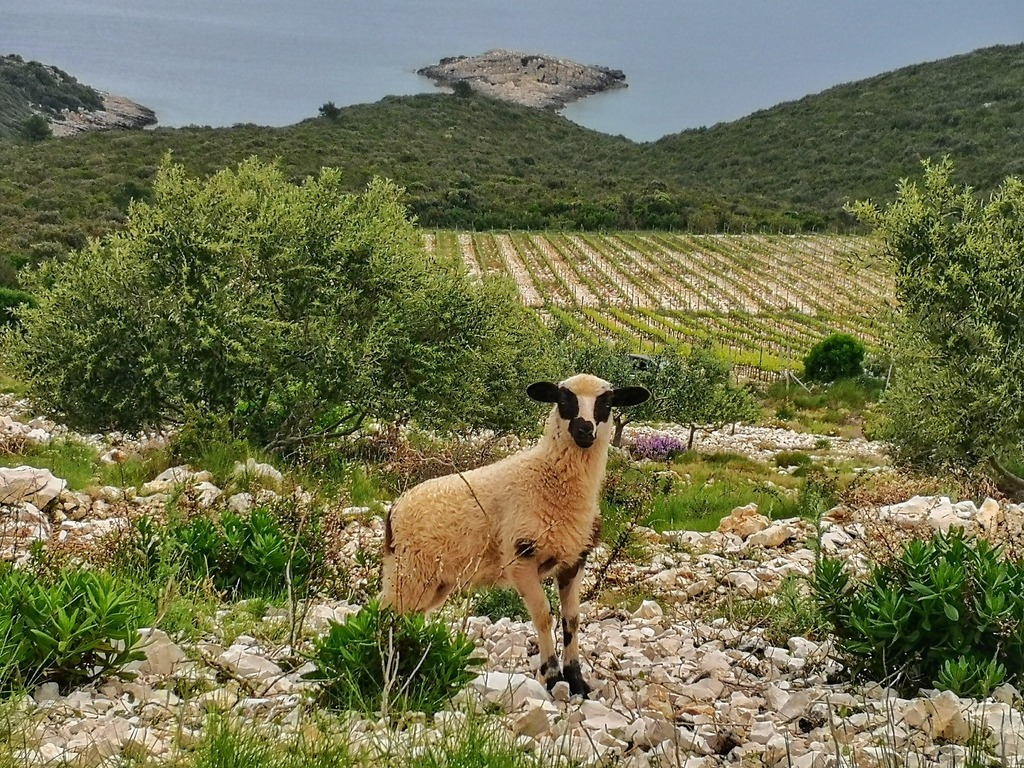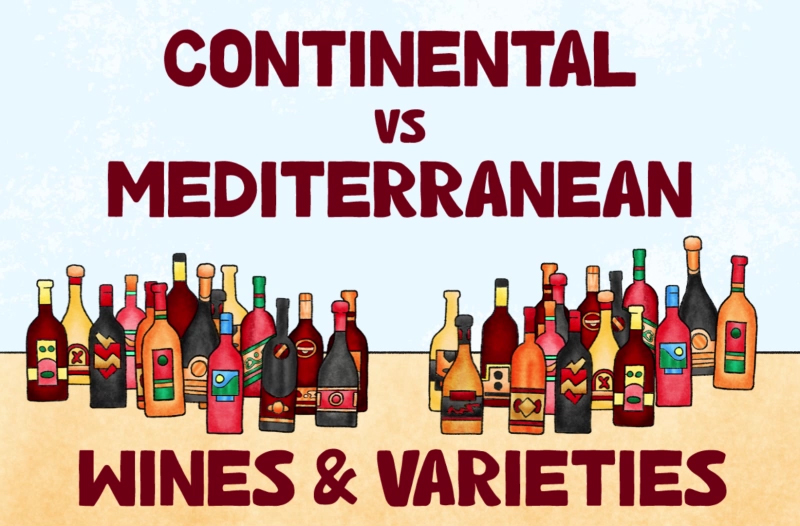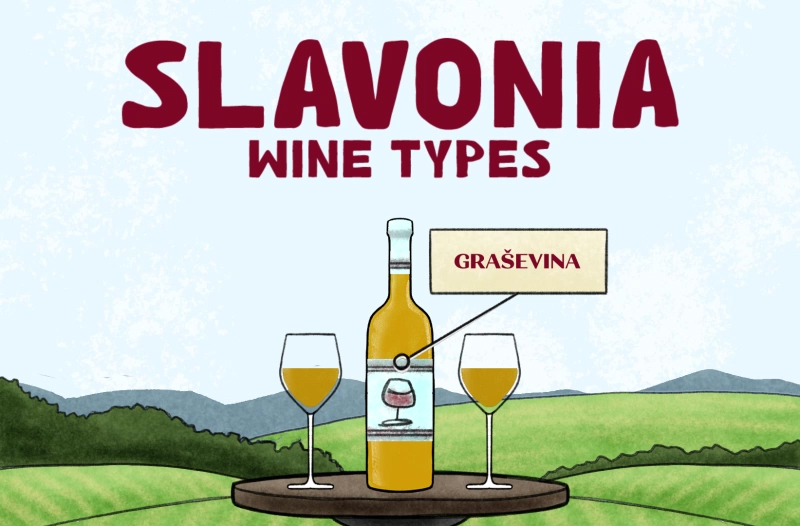[VIDEO] How To Pronounce Croatian Wines

By the time you finish reading this, and after a few glasses of Croatian wines, you’ll feel like a veritable wine connoisseur and will be confident ordering your next glass of white, red, or bubbly on your next Croatian trip. If you are in for a treat when visiting Croatia, this ultimate guide will help you with the Croatian language, the biggest obstacle between yourself and a world with an amazing array of native Croatian wine discoveries.
Introduction to Croatian wine pronunciation
Be not afraid of a long row of consonants in one word and some special characters like č, ž, or dž. Do not let names such as ‘Žlahtina’ or ‘Kujundžuša’ discourage you. Read the following guide and impress your dinner party guests with tongue-twisting varietal wines, just like you were born Croatian.
Maybe some of the wines will seem unpronounceable to non-Croatians, but we are here to help you read (and choose) Croatian wine like a proper local.

PLAVAC MALI [plǎːʋat͡s mǎli]
Plavac Mali, the most popular Croatian red wine, is grown along Croatia’s Dalmatian coast and is part of everyday wine culture. You could translate it as “little blue.” Plavac Mali shows two characters. One, cultivated on superior appellations, such as Dingač and Postup, differs from those cultivated in other areas of Pelješac and the South Dalmatian hinterland.
With its full-bodied, strong taste and stable characteristics, higher alcohol and tannins, and rich aromas of carob, figs, and sage, Plavac Mali can compete with some of the most prominent international wines. The microclimate, sun exposure, so-called triple insolation, and steep slopes are characteristic of Pelješac Dingač and Postup appellations, which is one of the reasons for the distinctive character of Plavac Mali.
Notable producers of Plavac Mali wines from Dingač appellation:
- Matuško winery
- Bura-Mrgudić winery
- Benmoche family
- Vicelić winery
- Madirazza winery
- Saint Hills winery
- Kiridžija winery
- Matković winery
- Edivo winery
- Dingač winery
- Sagul
- Skaramuča winery.
Notable producers of Plavac Mali wines from Postup appellation:
Notable producers of Plavac Mali wines from other Pelješac appellations and wine-growing Dalmatian regions:
- Korta Katarina winery
- Grgić winery
- Križ winery
- Markus winery
- Vislander winery
- Terra Madre
- Rizman winery
- Stina winery
- Volarević winery
- Plenković winery
- Crvik winery
Indulge your senses with an excellent introduction to this popular Croatian red wine with our Plavac Mali special case and best of Dingač wine case.
BABIĆ [ba-bie-ch]
Babić, native to Šibenik-Primošten wine-growing region, is potentially the noblest Dalmatian red grape variety. It can showcase a truly unique terroir character when grown on Bucavac terraced, steep, sunny slopes in extreme conditions. Like Plavac mali, Babić needs as little soil as possible, lots of sun exposure, and lower yields. It also has one characteristic that potentially makes it more successful than its cousin.
Despite the summer heat and the red-hot stone under it, Babić successfully preserves the ideal acidity ratio, giving it a more harmonious tone and a livelier character. Its elevated acids combine fantastically with high alcohol and ripe tannins, so the body becomes bold but at the same time drinkable and delicious. Concentration, minerality, and depth are the key ingredients that make this wine truly exceptional.
But the most impressive quality of Babić is its remarkable ability to preserve freshness and brightness, even in the scorching Mediterranean heat. It’s as if this wine is naturally immune to over-ripeness and jamminess, making it a top pick for any wine connoisseur.
Notable producers of Babić from the famous Bucavac appellation:
Notable producers of Babić from other appellations and wine-growing Dalmatian regions:
- RAK winery
- Testament winery
- Delusional wine winery
- Bibich winery
- Galić winery (Ego brand)
- Livaić winery
- Plenković winery
CRLJENAK KAŠTELANSKI [tserl-yee-ehnak kashh-tell-ann-skee]
Crljenak Kaštelanski (also known as Tribidrag and Pribidrag in Croatia Zinfandel in America, and Primitivo in Italy) is a red grape variety native to Kaštela wine-growing region. Due to its low resistance to diseases, the variety has almost disappeared from Croatian vineyards. It experienced a renaissance in California under the name Zinfandel and in southern Italy under the name Primitivo.
Known as the father of Plavac mali, Crljenak Kaštelanski is a grape whose written records date back to the 15th century. Crljenak Kaštelanski is a full-bodied, intensely deep, and strong red wine with a pronounced varietal aroma of spices, berries, and a charming and easy-to-pronounce name.
Notable producers:
- Korta Katarina winery
- Benmoche family winery
- Rizman winery
- Bedalov winery
- Stina winery
- Grabovac winery
- Vuina winery
- Matela winery
- Radunić winery
- Krolo winery
- Grgić winery
- Matuško winery
Although known by different names, it is still the same variety. We prepared a selection of six different Crljenak wines from its region of origin – Dalmatia. Feel free to compare it during a blind tasting with Zinfandel and Primitivo.

MALVAZIJA [malvaˈziːa]
Let’s talk about Malvasia – but not just any Malvasia, we’re talking about the native variety – Malvazija or Malvasia Istriana! Now, you might be thinking, “what’s so special about this one?” Well, every winemaker in Istria makes at least one, and each one is unique.
But first, a little background. Did you know that the Malvasia grape variety is a shared name of up to as many as 20 different varieties grown all over Italy, Greece, Portugal, Spain, California, Slovenia, and Croatia? Many of these varieties have nothing in common – they’ve been called Malvasia historically.
Istrian winemakers are creative, so they transform this grape variety into everything: from sparkling wine to light, fresh wine, serious vintages aged on the lees, orange wines, and intense sweet wines. With so many stylistic differences, there’s a Malvazija for everyone.
So, what can you expect from a glass of Malvasia Istriana? It’s usually made in a refreshing and easy-drinking fruit-forward style, with a unique acacia note that sets it apart.
Notable producers:
- Kabola winery
- Kozlović winery
- Benvenuti winery
- Clai winery
- Coronica winery
- Trapan winery
- Matošević winery
- Franković winery
- Vina Laguna winery
- Medea winery
- Rossi winery
- Piquentum winery
- Damjanić winery
- Meneghetti winery
- Gordia winery
- Ritoša winery
- Dvorac Belay winery
GRAŠEVINA [graʃevɪna]
Croatian wine buffs are especially proud their Graševina is recognized as the finest face of Welschriesling. It is official. The World Atlas of Wine uses the name Graševina and “Graševina first” truly sounds like an unspoken slogan of Croatian wines since this is the most planted variety in Croatia. It can be done dry, sweet, sparkling, or anything.
If you plan on a celebration in Croatia, you can’t miss out on Graševina wine. It’s no wonder that this wine is a staple, given the incredible range of styles winemakers can produce. The most common style is a fresh, young, dry wine that bursts with fruity and floral aromas. Think green apple, quince, pear, and elderflower, all perfectly balanced with crisp acidity and medium alcohol content.
But here’s the real kicker – depending on where the vineyard is located, you may also detect mineral qualities in this wine.
Graševina is a late-ripening grape capable of producing late-harvest dessert wines and sweet wines made from botrytis grapes. These sweet wines are a different game, with more concentrated aromas and flavors, ripe fruit notes, and a honeyed character. And suppose you’re lucky enough to visit during the winter. In that case, when the conditions are right, and the grape “survives” until January/mid-February, some producers will even pick Graševina to make ice wine after the temperatures drop below -7°C (45 F).
Notable producers:
- Kutjevo winery
- Krauthaker winery
- Antunović winery
- Adžić winery
- Josić winery
- Barun winery
- Iločki podrumi winery
- Ilovčak winery
- Krešić winery
- Galić winery
- Enosophia winery
- Markota winery
- Petrač winery
- Sontacchi winery
- Jakovac winery.
POŠIP [poe-ship]
This white variety is a true Croatian treasure native to the stunning island of Korčula. But what makes this grape so special? Luckily, it was discovered and is one of the few grapes that survived the devastating phylloxera outbreak. It still grows on its original rootstock since it was first planted in the sandy soils of Smokvica village. So not only is it delicious, but it’s also a survivor! Pošip is now grown throughout Dalmatia – from the Pelješac peninsula to the islands of Brač and Hvar and Biokovo slopes.
When harvested and vinified right, it is a full-bodied white wine with the perfect balance of alcohol and acidity. The wine boasts an intense aroma and flavor that will have you dreaming of dried apricots and figs. It’s no wonder why Pošip is a beloved grape variety in Croatia and beyond!
Notable producers of Pošip from Korčula island:
- PZ Nerica winery
- Krajančić winery
- Merga Victa winery
- Pecotić Baran winery
- Zure winery
- PZ Čara
- Blato 1902.
Notable producers of Pošip from other parts of Dalmatia:
- Grgić winery
- Korta Katarina winery
- Stina winery
- Volarević winery
- Senjković winery
- Milan winery
- Testament winery
- Rizman winery
- Deggara winery
- Plenković winery
- Grabovac winery
- Terra Madre winery
- Skaramuča winery
GRK [g r k]
Grk is a tough one!? Well, not exactly. It’s pronounced the way it is written. Think of it as a test to pronounce three consonants in a row. It sounds a bit like a work “Greek” (without “ee”) and, surprisingly so, has the same meaning. But it is a native white variety from the small town of Lumbarda on Korčula island. Exclusive, rare, and obscure variety, Grk is.
Now, there is no need to travel to Korčula to enjoy a glass of Grk or two. But beware, as Grk absorbs all the sun exposure transforming it into intoxicating, powerful, structured white wine. Get ready to indulge in medium-bodied wines with zingy high acidity. Grk wines are known for their unique fruity and mineral aromas, with hints of herbs, saltiness, or even pine with a delightfully tart and delicately bitter aftertaste.
Notable producers from Korčula island:
ŽLAHTINA [ʒlahtɪna]
Žlahtina is a native white grape variety grown specifically in the vineyards of a small town called Vrbnik on the island of Krk. It’s become an absolute must-have on the wine lists of restaurants and online shops nationwide and wider. Wine enthusiasts are smitten with its refreshing character and the delightful, airy scent that reminds one of the gentle flowers and ripe fruit. But that’s not all – its light, smooth, and silky taste is the cherry on top. It’s no wonder that Žlahtina is considered the leading varietal of the region.
Notable producers:

DEBIT [de-bit]
Let us paint a picture for you: imagine a grape that’s so special. It was once used as a currency for payment. That’s Debit, a late-ripening white grape native to North Dalmatia. This grape has quite a fascinating history, having won numerous awards and even being exported to France and Italy. It’s said that even Marshal Marmont couldn’t resist a glass of Debit!
So what makes Debit so unique? Well, this grape combines the freshness of the north with the strength of the south, resulting in a light, mineral, fresh, and dry wine with a one-of-a-kind style. When you take a sip of Debit, you’ll be hit with the scent of citrus blended with chamomile flower, rounded out with the flavor of the sea, salt, and stone.
If you want to try the best expressions of Debit, you’ll want to head to the Promina and Drniš wine regions. Here, you’ll find Debit with a fluttery and fresh taste, boasting floral and fruity aromas with a hint of acidity.
Notable producers:
MARAŠTINA [ma-rash-ti-na]
Maraština is an old and indigenous grape variety found along the Dalmatian coastline. Also known as Rukatac and Krizol, Maraština was once one of the most widespread Dalmatian white grape varieties.
Aromas and flavors range from herbal, ripe pears, quince-like fruit characters, apricot, peach, and hints of vanilla. With a fruity fragrance, golden-yellow color, and lower acidity and alcohol content, this wine is perfect for those who enjoy a smooth and flavorful feel. But only after they learn how to pronounce the wine’s name.
Notable producers:
- Miloš winery
- Sladić winery
- Ante Sladć winery
- Jokić winery
- RAK winery
- Bedalov winery
- Crvik winery,
- Duboković winery.
ŠKRLET [sh-kr-let]
Škrlet is the indigenous Croatian white grape that shows the greatest potential in the sunny southern slopes of Pokuplje and Moslavina wine-growing region when young, giving off a fresh and crisp taste that’s hard to resist.
With lower extract levels and medium alcohol content, they have a refreshing and brisk character. The fruity flavor is mild and reminiscent of barely ripe apples and young pears, with just a touch of dried herbs. The more prestigious brands of Škrlet wine also have distinct mineral notes of quartz and schist, adding depth and complexity to their exquisite taste.
Notable producers from Moslavina wine-growing region:
- Kosovec winery
- Lagena winery
- Vinarty winery
- Ilovčak winery
- Voštinić Klasnić winery

VUGAVA [vu-ga-va]
Get ready to discover one of Croatia’s oldest grape varieties, the mighty Vugava (or Bugava), from the stunning Vis island! This versatile grape created high-quality white wines and sweet and decadent Prošek wines.
Its fresh and fruity aroma, coupled with a creamy texture, is a match made in heaven. And did you know that this grape’s glory dates back to ancient times? Legend has it that the great Greek historian Agatarhid praised the wine from the island of Issa (now Vis), saying it was the best compared to all others.
Notable producers:
- Stina winery
- Vislander winery
- Podšpilje winery
- Lipanović winery
BOGDANUŠA [bog-da-noe-sha]
Bogdanuša is a white grape variety indigenous to Hvar island. It carries a name roughly translated as God-given or God-send, allegedly because the wine used to be served at religious ceremonies and local festivities.
This white grape is mostly used to make varietal wines, but occasionally you can also find it blended with other local varieties. When you sip on a glass of Bogdanuša, you’re in for a treat! Delightful herbal and floral notes, lively acidity, and a refreshing finish accompanies its light, food-friendly character. Sip a glass of this God-given wine and earn a blessing while practicing its pronunciation!
Notable producers:
- Plančić winery
- Hvar Hills.
KUJUNDŽUŠA [ku-iun-dzu-sha]
Kujundžuša, a white grape variety native to the Imotski region. This high-yield grape is the perfect choice for easy-drinking and approachable varietal wines. When you pour yourself a glass of Kujundžuša-based wine, you’ll be greeted with a beautiful golden yellow hue. These wines are known for their naturally low acidity and subtle mineral notes, making lighter wines perfect for early consumption. The only complicated thing about Kujundžuša for non-Croats is – its name!
Notable producers:
Still feeling a little tongue-tied when it comes to ordering a glass of Graševina, Škrlet, or Kujundžuša? Fear not! After viewing this video and sipping some delicious Croatian wines, you’ll order these native Croatian wines like a true Croat!
Our team created a video to guide you through the proper pronunciations and transform you into a wine-savvy Croatian in no time!
Unpack our handpicked indigenous Croatian white wine case or red wine case and get to know the wines on a more personal level, one glass (or one bottle) at a time!





